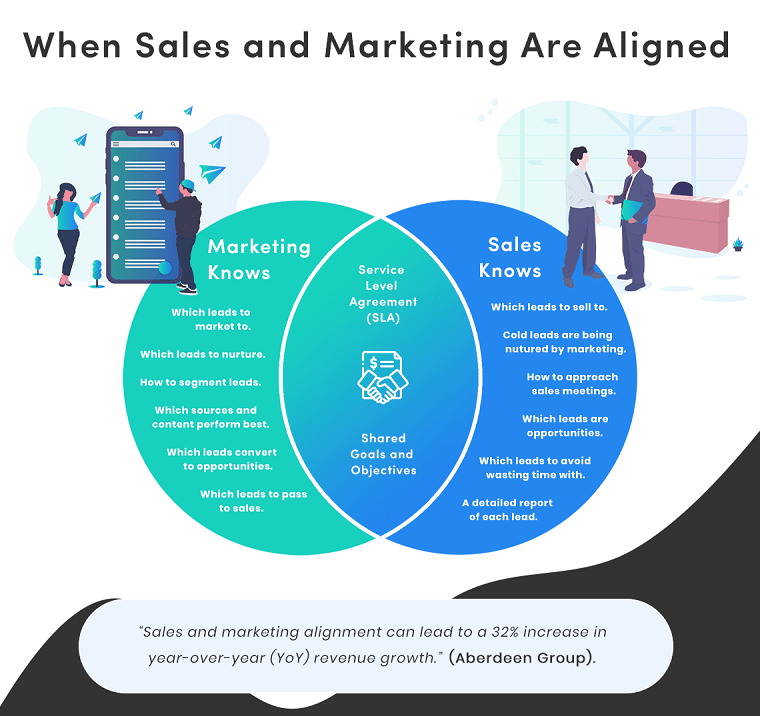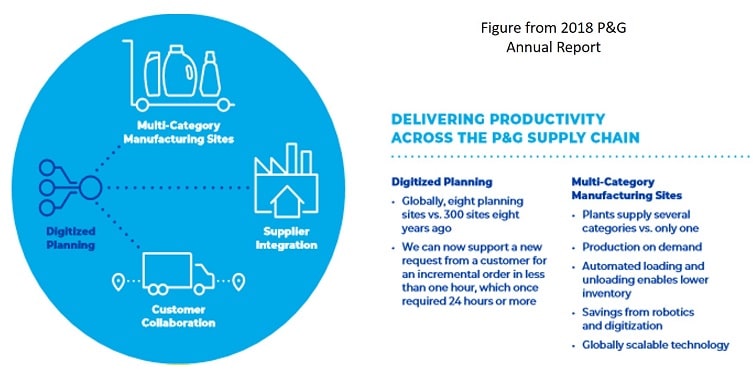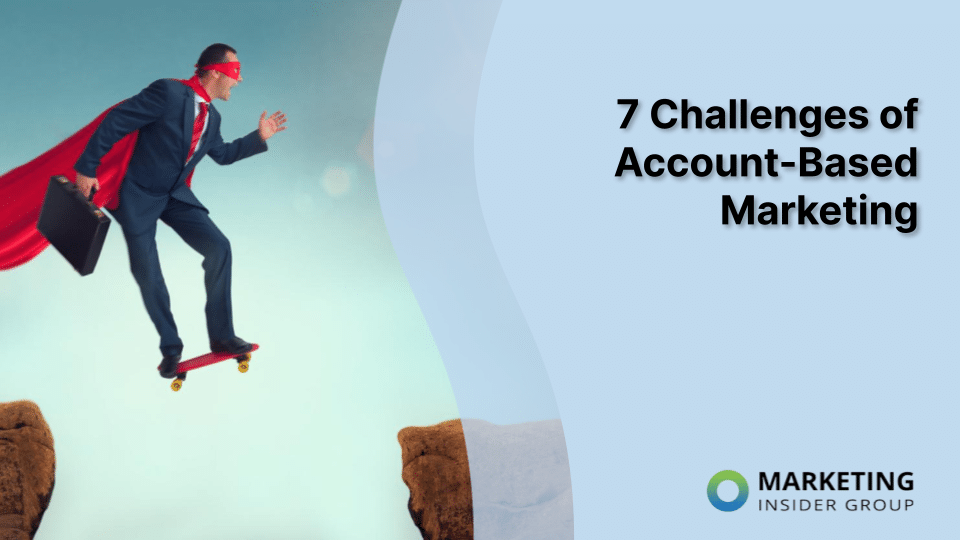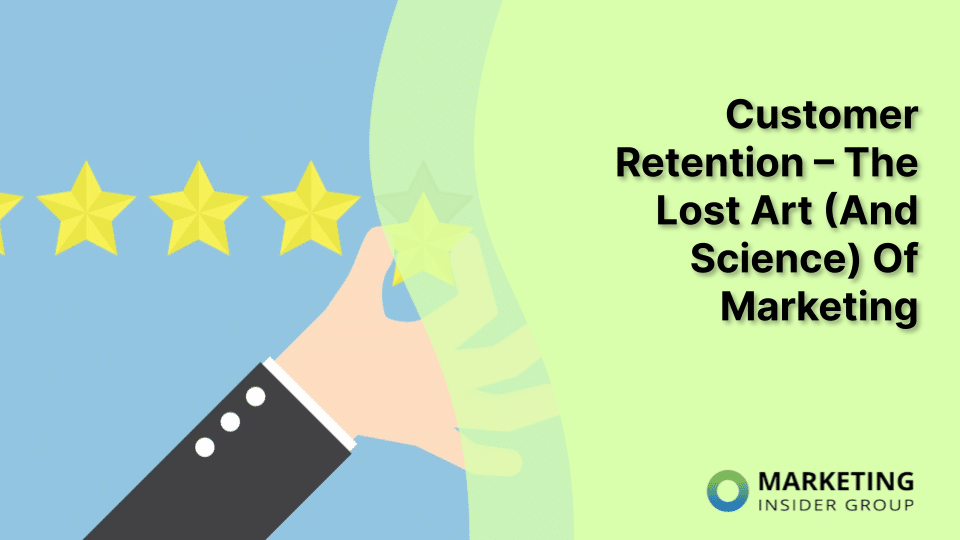
Account-Based Customer Marketing – How to Stop the Sales Drop with Retention Growth
As new business slowed (and in many cases came to a screeching halt) due to C-19, many companies have shifted their focus to existing customers. Now, sales and marketing want to increase customer engagement to make sure that their program is not cut as the C-suite looks to conserve cash. They are also looking for ways to drive growth with existing accounts to make up for slow new business acquisition.
But, sales and marketing’s focus should have always been balanced between new and existing customer as sales cycles in existing accounts are at least 50% shorter than new accounts. This is a huge savings in cost of sales and marketing investment in return for greater profitability and revenue growth.
Companies Do Not Have a Strong Ability to Expand Business in Existing Accounts
According to CSO Insights, 54.9% of companies report a gap in penetrating new business units or cross-selling/upselling. In working with SaaS, SCM tech (WMS/TMS/ERP), IT implementation firms, 3PLs and professional service firms, I learned that the challenge lies with silos and the traditional hand-off between sales, marketing, and account/customer success teams.
In rare instances do the three departments work together with shared common goals and metrics and execute jointly to win, protect and expand specific accounts. This provides a great growth opportunity for the teams to work together to not only identify the best margin and revenue growth opportunities but also help named customers “see” how you help them solve business problems in a way that increases their loyalty.
Let me share with you some examples of how “must keep” accounts were protected and how “must grow” accounts were expanded by aligning sales, marketing, and customer success teams.

Account-Based Enablement Protects At-Risk Fortune 25 Accounts Like P&G
P&G (a long-time client of a regional 3PL located in Green Bay, WI that specializes in DC management, WMS & TMS) was a customer that our client looked to grow. The accounts team drove discussions at the Director level. But it was about the activities that were being completed and general “benefits” – and not about the gaps that were filled and how it positively impacted operations, finance, employees and the customers.
Because accounts were not having the right customer conversations that were supported by case studies, content and messaging that proved “unique value” gained and where future opportunities lied, the team was not able to drive top-to-bottom engagement. They could not get access to the VPs and the CXO that Ryder (a larger, national competitor) had close relationships with. Three years of having the wrong conversations led P&G to caution our client that the company will most likely move to the larger, lower-cost national provider. This was our client’s biggest customer with the greatest revenue growth potential and they were about to lose it!
To overcome the relationship gap with the much larger competitor, the team decided to involve sales & take a personal approach to marketing. This began with building LinkedIn profiles, content, case studies and personal messaging for the purpose of penetrating P&G. For example….
1. Our clients’ profiles talked about how 50% of 3PLs under-leverage the warehouse, distribution center, and transportation as they focus on costs rather than growth (a key differentiator). The SVP of Sales and Marketing talked about her 14+ years of tenure at P&G to demonstrate that she understands their business, operations, and culture.
And there were stories that were relevant to P&G such as how segmented visibility resulted in Ryder making suggestions that would slow inventory turns by 50% and put 40% of direct ships at risk for P&G. She didn’t just make claims – she proved how other 3PLs focus on costs instead of getting a strong and accurate measure of how each part of the supply chain impact each other and their customers’ growth. And, she proved how it impacted P&G personally.
2. Their case studies were designed for the conversation that sales and accounts wanted to have with P&G leadership – a conversation around gaps that existed, why it existed and how our client was the only 3PL that would have filled those gaps. It was built for a conversation that showed the impact on On-Time, In Full Delivery that our client (a key focus area) and the total value achieved in addition to where the future opportunity lies.
Backed by stories, the purchasing manager decided it was time to reconsider buying habits. This led to an intro with P&G’s Director, who worked with the 3PL director regularly. Once they understood the personal impacts they asked our client to meet with the corporate VP decision-maker. There, the stories were further validated to prove the case on hard costs vs soft costs (and risks versus growth)
3. Articles were created in real-time for selling conversations rather than to gain brand awareness. For example, we created an article that focused on total supply chain value because this is something that the buying committee kept mentioning (but couldn’t define) during selling conversations.

Within the article, we shared what total supply chain value meant to our client, the metrics that should be tracked and why most 3PLs could not provide value beyond cost savings. From there, the team was able to drive discussions around a total supply chain value index and how it would be measured to keep our client accountable. This was something that no other 3PL could offer.
Because our client engaged in a personal account-based sales and marketing approach, P&G went from cautioning that the company will most likely move to the larger, lower-cost national provider to awarding new e-com business without an RFP or bid process. They are also in conversations to expand within the site and to develop strategies for additional locations.
Account-Based Enablement Changes Buying Behavior & Creates Margin Growth with Accounts Like Sephora
Sephora was treating its tech implementation consultants like the manufacturers’ line workers: reacting, not proactively strategizing. Our client, a JDA implementation firm, kept receiving a shortlist of 30 pain points needing coverage within six weeks to go-to-market causing our client to build for “wants”. Because our client, was not having the right customer discussions, Sephora would treat our client as technicians and pay for man-hours vs. strategic value that has higher profit margins and revenue growth. And Sephora would try to penny pinch and negotiate on the number of hours and resources that would be needed for different projects.
There was no conversation involving our client in the go-to-market planning of new products or lines. They didn’t have the content, stories and messaging to show how building for 30 software points only seeing 5-8% of the entire picture is leading to missed details and requirements as there’s no visibility into pipelines, growth plans, customer-driven needs, and current/future operational bottlenecks. They weren’t able to show the impact and how it delayed retail/e-commerce presence, wasted marketing dollars, increased days in inventory, slowed cash conversion cycles, missed customer shipments and created out of stock conditions.
Further, they weren’t able to show Sephora how the current reactive IT approach was allowing Ulta to beat them in customer loyalty and for Amazon to make inroads with the high-end beauty market as GTM time for new products and shades were increased by 6 months. Ultimately, they didn’t have messaging, content and support for the “why evolve” conversation that needs to happen to change “buying behaviors” and expand profit margin and revenue growth.
Once the client was able to shift the customer conversation with profiles, content and messaging that was designed specifically for the why change or why evolve conversation, they were able to change the client’s perception of the firm from “technicians” to “strategic partner.”
Our client joined leadership in the planning stages. They added value with processes that will show how changes would impact the warehouse, distribution, and transportation under different scenarios and allow the beauty retailer to adapt and scalably align with new system changes without disruption to stores or customers. With this added value came more profitable revenue growth that was stronger than trading dollars for hours.
Account-Based Enablement Expands Accounts Like Treehouse Foods
Treehouse Foods was an existing customer for Schneider’s transactional freight brokerage service. However, with only a 1% share of wallet. 99% of the clients’ business belonged to the competitors. The account manager would ask for opportunities to discuss growing the business each month, but the client did not see the value or find any compelling reason to move forward. They saw Schneider only as a tactical partner who would provide low-cost trucking rates, rather than a strategic partner who could also help them reduce larger operational costs.

Now, because key insights were made available online, Schneider’s VP of Sales was able to engage the senior decision-makers one-on-one and invite them into a LinkedIn community with discussions around how mid-market supply chains are under-served by gaps in technology and processes. Rather than using the community as a news feed or ‘tips and tricks’ blog, it was instead used to create an understanding of gaps, re-frame the client’s ideas, and open their minds to a new path to value.
These discussions revealed significant challenges within their existing partners and processes, which the sales team has also leveraged in their live, offline discussions. Because the inbound supply chain leaders were pulling the sales team through the buyer’s journey and into discussions on “how Schneider would fix their processes”, we know that Schneider is positioned to take over their transportation management once their existing contract ends.
How to Move Forward with an Account-Based Customer Marketing Program
It’s time you double down your sales and marketing efforts on existing customers. Look internally at the customers you already have. Select the account targets you must “protect”, you must “change buying behavior” and you must “expand”.
Then put together the messaging and stories you need for specific “why stay”, “why pay more for customer renewals and upgrades” and “why evolve for upsells, cross-sells and product migrations” conversations. Notice the keyword “specific” in my previous sentence. This is not about speaking one-to-many. It requires a personal approach if you want to drive strong customer growth with accounts that may be stuck in status quo.
Jessica Fewless (former VP of ABM for Demandbase) and I discussed this further within a fireside chat in our recent Stop the Sales Drop Virtual Summit. When you join our STOP THE SALES DROP community, you can get access to the on-demand recording (along with 40+ other sessions.)






